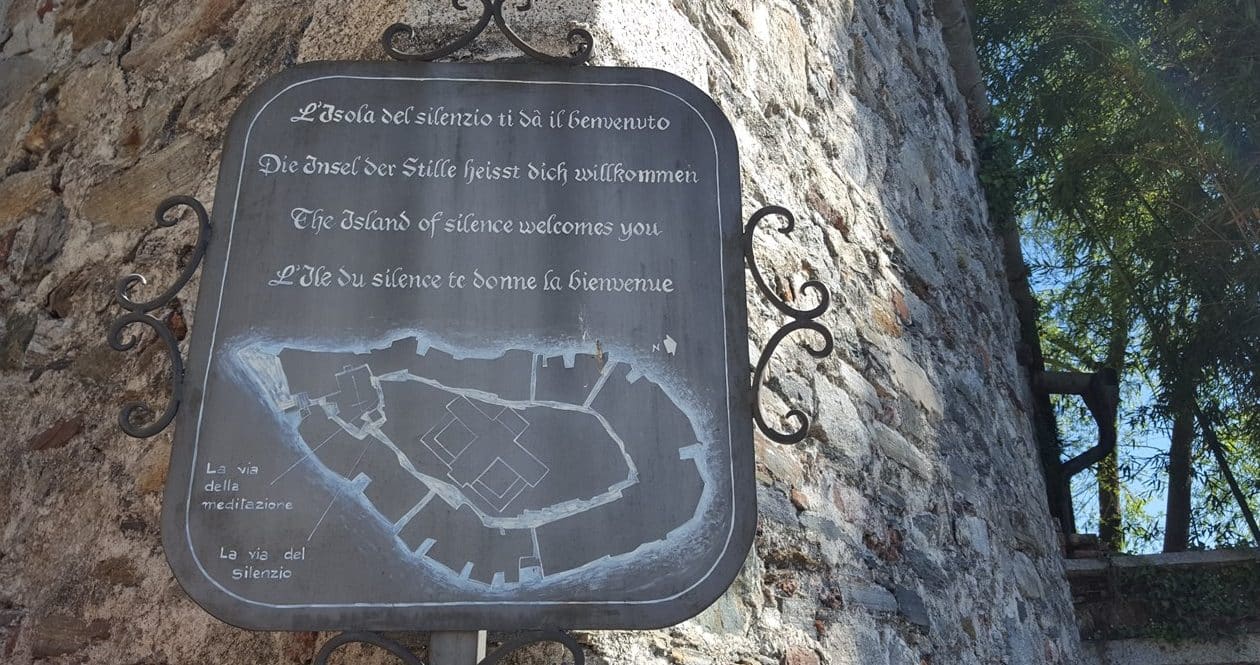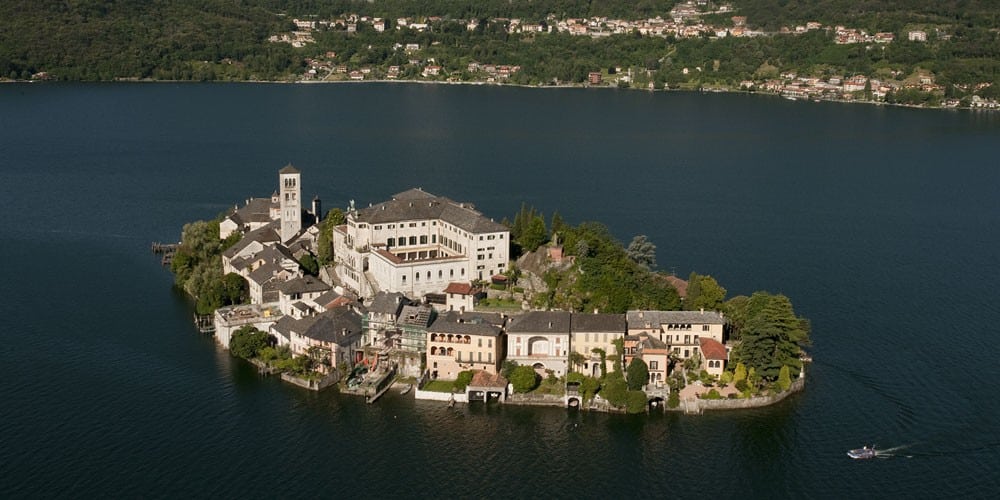In ancient times, the island of San Giulio, the only one in the Orta lake and overlooking the village of Orta San Giulio, was little more than a rock inhabited by snakes and a dragon that was living on cattle and sometimes human lives.
Today the island is called the Island of Silence not only for the limited number of inhabitants, largely nuns, but also for the curious walk of “silence and meditation“.
The Island of Silence is definitely a place full of peace and magic enclosed in a fascinating lake frame …but let’s take a step back.
At the time of Emperor Theodosius, in the second half of the 4th century, two religious brothers travelled Italy with the mission of spreading Christianity and converting pagan people. Giulio and Giuliano, with the emperor’s approval, departed with the intent of succeeding in evangelizing pagan populations and building a hundred churches.
The journey was long and the misadventures with the pagans were many, but the faith that led them was so strong that they could succeed in their intent until they reached the banks of Lake Orta.
Looking at the lake, Giulio had the inspiration to build the hundredth church on that one island but was discouraged by the locals, who said that rock was inhabited by terrible reptiles and a fearsome dragon. No boatman wanted to accompany the two missionaries in that goddamn place. At that point Giulio on the banks of the lake prayed to the Lord and his prayer made his coat firm and waterproof so that he could cross the waters. Upon arriving on the island, the missionary defeated the reptiles and the dragon all under the agonized eyes of peasants and boatmen watching from the shore of the lake. Seeing these prodigies: a cloak transformed into a boat and the battle against monsters; the villagers rushed to the island to implore Giulio to convert them and to help him build that last church of his mission. To the island was given the name of the saint who defeated the monsters, island where he still rest today.
“A legend of conversion as many read” you might say, but in the sacristy of the Romanesque Basilica of the Island of San Giulio, there is a vertebra of a large animal. Some say that this big bone belongs to a lakeside dinosaur, but according to the nuns of the convent, that is the vertebra of the dragon that was defeated by San Giulio.
After the defeat of the dragon and the edifice of the church, St. Giulio’s Island had a stormy history for centuries. Today, with a population below one hundred inhabitants, of whom only seventy of nuns dedicated to the study of sacred texts and prayers, is a place of peace, silence and meditation.
It is, as we said, curious and at the same time fascinating the path of “silence and meditation” that runs through the island. A path along which there are signposts, in different languages, on which are written citation of silence and meditation.
These signs that were written by Mother Anna Maria Canopi, the most important living female figure of the Catholic Church and abbess of the island monastery, are placed in such a way that if one goes on the path in one way they will speak of silence…
Listen to the silence
Listen to the water, the wind, your footsteps
Silence is the language of love
Silence is music and harmony
…undertaking it in the other, they will speak of meditation:
When you are aware the trip is over
If you come to be what you are, you are all
The essay is wrong and smiling
Be simple, be yourself
The evening is approaching and the last tourists who have sought peace and who have been enchanted by the magic of the small island rush to the last ferry to Orta San Giulio, at 18:00, after which until the arrival of new travelers the next day, on San Giulio’s Island return, immutable in time, silence and meditation.



0 Comment